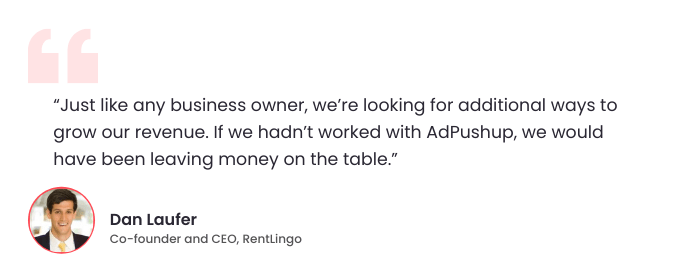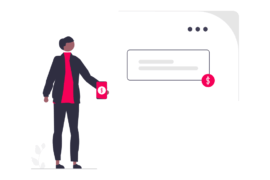In this post, we show strategies to combat ad blockers and how publishers can regain their lost revenue.
When it comes to the advertising industry and the challenges that it faces, it suffices to say that ad blockers are one of the most important ones. In fact, it is no longer an exception, rather, it has become a practice in most cases that makes it very difficult for digital marketing agencies to work with their clients in a profitable manner.
Did you know that about 40% of the global population of internet users implement ad blockers? It has also been found in surveys that men use ad blockers more than women, irrespective of their age group. In fact, most consumers nowadays avoid coming across any kind of advertisements – be it via ad blockers, skipping ads, or paying for an ad-free experience.
Whether you are an advertiser or a publisher, the ramifications of internet advertisements being blocked can be massive, leading to a substantial loss in revenue. This is automatically making the relationship between advertisers and publishers problematic. To address these very problems in their entirety, the following points will be discussed at length in this article.
Also Check: AdBlock Recovery Calculator
What Exactly do We Mean by Ad Blockers, and How Do They Work?
Ad blockers are nothing but browser extensions, which mainly work by blocking any content that is advertorial or substituting them with some other kind of content. As much as 25% of advertisements worldwide are blocked by these extensions, as a result of which they are unable to reach their target customers and turn out to be a big waste of money. Ad-blocking software has two common components – ad blocking and list filtering.
Ad-blocking extensions may be built-in, as in Chrome or as browser extensions, and they function in a way that can prevent advertisements, safeguard against malware and disable trackers. The ad blockers check the codes of pages, searching for scripts it is designed to block by default and also the specific parts of the page that the user has instructed it to stop from loading. These are the few pages on which an ad-blocker works.
Blocking of Ads
The main important function of an ad-blocker is to stop displaying ads of various formats, including pop-ups, pop-unders, autoplay video commercials as well as flash banners.
Blocking of Elements
Ad Blockers also have the ability to block certain website elements like third-party typefaces, scripts, or large media assets.

Disabling Trackers
This feature allows the ad-blockers to stop activity tracking in browsers so that users can experience safer and more private browsing.
Disabling of Social Sharing Button
Nowadays, several blogs and articles come with social sharing buttons. Some ad blockers can also disconnect the social media connection.
Domain Blocking
Ad-blocking add-ons are also designed to maintain a directory of black-listed domains and websites which might contain malware.
Serving Advertisements
A number of top-notch ad blockers can boost income by offering a reduced version of advertisements to the users, and for this, it receives a percentage of the revenue of the ad blockers.
Also Read: Recover Lost Ad Revenue through Adblock Recovery Software
Best Strategies to Implement For Combatting Ad Blockers
Having said these, let’s take a look at the five best strategies that you can adopt to deal with ad blockers and save your revenues from plummeting any further.
Acceptable Ads
If you are not sure what acceptable ads are, let us tell you that they are used to close the gap between monetization and user preference. They can enable the showing of advertisements, which are essentially user-friendly and, as a result, save the publisher ad revenues from any negative impact.
Eyeo was an organization that was responsible for starting the initiative of Acceptable Ads. These ads are supposed to stick to the standards meant for and used by ad-blocking users. Studies show that the opt-in rate of acceptable ads has increased substantially, crossing 95%.
Also Check: Acceptable Ads Vs. Better Ads: A Detailed Guide for Publishers
Native Advertising All the Way
Ad blockers affect the impact of the regular banners to a great extent, and therefore, ad publishers have started to ditch the banners, opting for native ads gradually. Statistics show that the expenditure on native ads shot up from $47.33bn in the year 2020 to as much as $57.27 in the year 2021. It is, in fact, expected to reach as high as $400bn by 2025.
The best part here is native ads look quite natural and mimics the environment as much as to minimize the factor of disruption for the users. As opposed to display ads, native ads function exactly like the website or app that the user is using. Sometimes they are also referred to as “Promoted” or “Sponsored” content instead of advertisements.
These include advertisements on various social media platforms or even branded/paid/sponsored content on websites. Moreover, publishers can also choose to run the native ads on server-side integration, which means that it would no longer be necessary to use ad tags on the web page. All these, taken together, promise a seamless experience for the user, ensuring faster loading of pages and protection against various malware attacks.
This also eventually increases the brand awareness and trust factor, which has a very positive impact in the long run.
Appropriate Ad-Tech Providers Can Save the Day
For publishers, making up for the lost revenue is difficult, but patience and correct strategies are the keys to it. One fine strategy that most publishers are opting for nowadays is collaborating with an Ad-tech platform. This, when done with precision and planning, will increase the viewability of your ads to a great extent. Their job is also to provide the publishers with a premium ad-reinsertion technology which will eventually have a positive impact on user experience.
Ad servers that are primarily customer-centric are often found to improve user experience by using customized ad formats. Users can easily find what they are looking for without any annoyance or disruption. In such cases, users tend to refrain from using ad-blockers on the website of the publishers and also veer towards whitelisting them.
Ad-tech providers also make use of SEO with the right kind of content, keywords, social media connections, etc., which helps build brand awareness holistically.
Using Programmatic Audio as Leverage
Leveraging a programmatic approach for bypassing ad blockers is also a convenient approach. Programmatic audio is a big part of the said approach. One fine example is the use of programmatic audio, which appears during podcasts.
Ad blockers are primarily programmed to block visual ads, and therefore, audio ads often go unnoticed. So many publishers consider using audio placements on their websites and later go on to sell ad inventory via a supply-side platform.
In the same way, programmatic solutions can enable systematized selling and buying of digital advertising. They can also go as far as targeting one specific customer with one single ad and in a specific context, all done in real-time. Advertisers and publishers alike have the ability to determine consumers who will receive their message. This, in turn, increases the ROI to a great extent.
In a Nutshell
So publishers do not necessarily have to give up on advertisements to keep increasing their revenue from monetizing. For publishers, it has become inevitable to use top-quality ad-blocking recovery solutions to keep their efforts fruitful. So, when addressed properly, ad-blocking is merely an issue which will eventually go away with proper strategies and solutions.

Shubham is a digital marketer with rich experience working in the advertisement technology industry. He has vast experience in the programmatic industry, driving business strategy and scaling functions including but not limited to growth and marketing, Operations, process optimization, and Sales.





